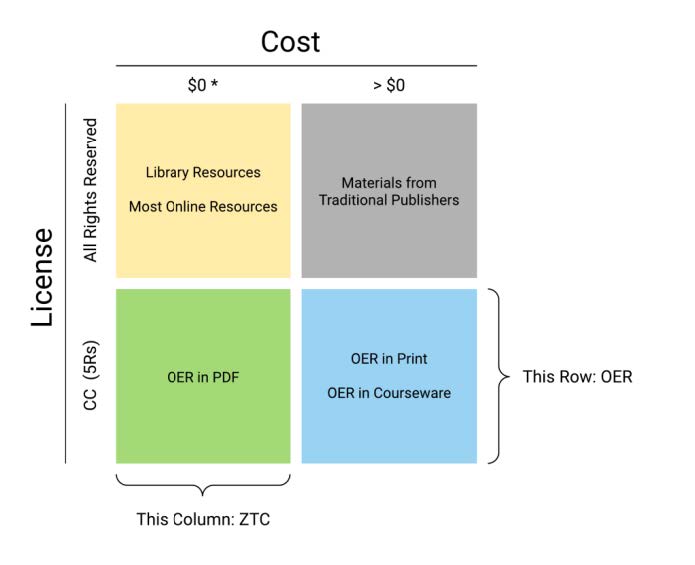Interested in learning more about OER? CCC has resources to help faculty find and adopt OERs for their courses. In many cases, complete textbooks already exist with ancillary materials. Sometimes faculty choose to create their own textbook by piecing together chapters of different OER works. The best place to get started is our OER LibGuide linked below.
Faculty can also make an appointment with Brooke Ramos (OER Librarian) or Stephanie Coffman (OERI Liaison) to discuss OER options for your course.
The Clovis Community College OER LibGuide is a one-stop shop for all you need to know about OER. You can find information on finding, adopting, and creating OERs.
Faculty can self-enroll in the Clovis Community College OER Training Course on Canvas. This course is not facilitated and is self-paced; faculty can enroll at any time and complete the course any time. Once you have completed the course, you will earn a certificate of completion.
Course Description: This course serves as an introduction to Open Educational Resources (OER), providing faculty with new options for selecting textbooks and other resources so they can make the best decisions for their students. At the end of this course successful participants will be able to:
- Properly identify the Creative Commons (CC) license on a resource and describe how this resource can and cannot be used.
- Discuss the advantages and disadvantages of open resources using current research in the field as evidence.
- Research, analyze, and review repositories of open resources.
- Effectively search for open resources and post reviews in an OER repository.
- Create an open resource by remixing multiple existing resources and designate a license to this new resource based on the licenses of multiple resources use.
Please watch your email for paid opportunities to complete the OER Training Course. Email Stephanie Coffman for more information.
We are currently accepting applications for another round of OER Awards, focused on general education courses to complete these ZTC pathways. All current, full-time and part-time, faculty are invited to submit proposals.
- Program information and the application can be found on our OER SharePoint. Please note that you need to be logged into your Microsoft 365 to view.
- Applications are due March 3, 2025 at 5:00 PM.
- Please email Stephanie Coffman with any questions.
Clovis Community College’s OER Award Program provides incentives to faculty members to adopt, create and update OER materials. We are currently developing Zero Textbook Cost (ZTC) degree programs in Communication Studies, Early Childhood Education and Wildlife and Plant Technician, funded by the ZTC Degree Grant Program.
Congratulations to all of our faculty members who were awarded OER Grants in the Fall 2023 Application Cycle: Tracy Stuntz, Melanie Sanwo, Derek Dormedy, Cody Hoover, Jennifer Simonson, Anna Martinez, Malachi Whitford, Christina Wells, Jon McPhee, Eunji Seo, Georgia Fritz, Nathan Wensko, Benjamin Bohan, Amy Danowitz, Stephanie Briones, Scott Phillips, Brian Shamp, Rebekah Villalta, Grace Freymiller, Stephanie Coffman, Rosa Alcazar, Jason Gardner, Laurie Taylor, David Cao, Crystina Ciula, Hilary Dildine, Eugene Hannon, Michelle Selvans, Janice Ledgerwood, Elizabeth Romero and Heather Boynton!










